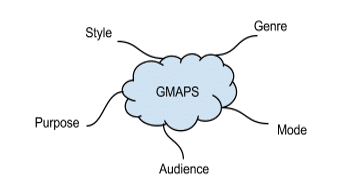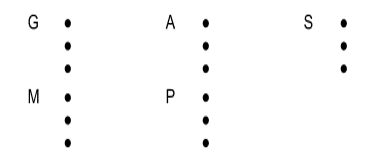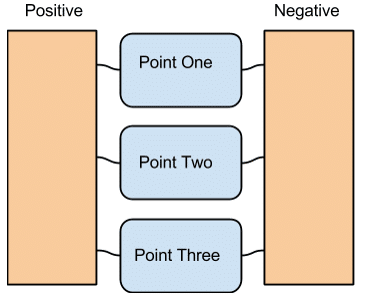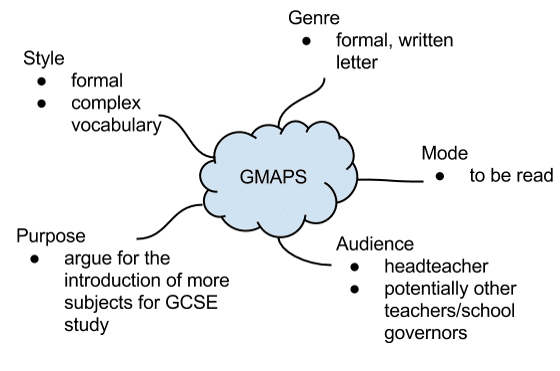Table of Contents
Week 1 | English Grammar
Day 4 |I am doing (present continuous)
Day 5 |Are you doing? (present continuous questions)
Day 6 |I do/work/like (present simple)(present continuous questions)
Week 2 | English Grammar
Day 1 |I don't... (present simple negative)
Day 2 |Do you...? (present simple questions)
Day 3 |I am doing (present continuous) I do (present simple)
Day 4 |I have... and I've got...
Day 6 |Worked/got/went etc (past simple)
Week 3 | English Grammar
Day 1 |I didn't... did you...? (past simple negative and questions)
Day 2 |I was doing (past continuous)
Day 3 |I was doing (past continuous) and I did (past simple)
Day 4 |I have done (present perfect 1)
Day 5 |I've just... I've already... I haven't...yet (present perfect 2)
Day 6 |Have you ever...? (present perfect 3)
Week 4| English Grammar
Day 1 |How long have you...? (present perfect 4)
Day 3 |I have done (present perfect) and I did (past)
Day 4 |Is done, was done (passive 1)
Day 5 |Is being done, has been done (passive 2)
Day 6 |Be/have/do in present and past tenses
Week 5| English Grammar
Day 1 |Regular and irregular verbs
Day 2 |What are you doing tomorrow?
Week 6| English Grammar
Day 2 |Must, mustn't, don't, need to
Day 6 |Do this! Don't do that! Let's do that
Week 7| English Grammar
Day 2 |There is... There are...
Day 3 |There was/were... There has/have been... There will be...
Day 6 |Have you? Are you? Don't you? etc
Week 8| English Grammar
Day 1 |Too/either/so am I/neither do I etc
Day 2 |Isn't/haven't/don't etc (negatives)
Day 3 |Do they? Is it? Have you?
Day 4 |Forming questions (who/what/why/where/when/which)
Day 5 |What...? Which...? How...?
Day 6 |How long does it take...?
Week 9| English Grammar
Day 1 |Do you know where...? I don't know what... etc
Day 2 |He/she said that... He/she told me that...
Day 3 |Work/working Go/going Do/doing
Day 4 |I want you to... I told you to...
Day 5 |I went to the shop to...
Day 6 |Go to... Go on... Go for... Go -ing... Get…
Week 10| English Grammar
Day 4 |I/me He/him They/them etc
Day 6 |Whose is this? It's mine/yours/hers etc
Week 11| English Grammar
Day 1 |Myself/yourself/themselves etc
Week 12| English Grammar
Day 2 |All/most/some/any/no/none etc
Week 13| English Grammar
Day 2 |If we go... if you see... etc
Day 3 |If I had... If we went... etc
Day 4 |A person who... A thing that/which (relative clauses 1)
ENGLISH – WRITING TO ARGUE – GCSE
Learning Objective: To understand what writing to argue is and how you can create a successful argument as a response to an exam paper question.
What is Writing to Argue?
- Writing to argue involves you presenting an idea to someone else. It can be presented as a letter, an email, a speech and in many other ways.
- In the text you are primarily working to put across your argument clearly, you should not make it passionate or emotional that is writing to persuade.
- Writing to argue deals with hard facts and although can include strong opinions, a good argument always remains well balanced addressing both sides of the issue.

Some Useful Techniques:
- Rhetorical Questions
- Emotive Language
- Power of 3
- Repetition
- Facts and Figures
- Opinion
- Anecdotes
- Formal vocabulary
- Irony/Sarcasm
- Oxymoron
- Jargon (words specific to your topic e.g wifi is specific to technology)
- Pun
How can you structure and plan a Writing to Argue text?
- Before you begin writing a text you must always plan it. Take 5-10 minutes to collect your ideas and form a coherent plan. By doing this you can organise your thoughts and prevent unnecessary repetition.
- Use the helpful acronym GMAPS to help you plan your Writing to Argument text. Each letter represents an important aspect you must consider to write a successful argument.
○ G = Genre
○ M = Mode
○ A = Audience
○ P = Purpose
○ S = Style
Step 1: GMAPS, The Very Useful Acronym.
| G | Genre | ● | This refers to what type of document it is:
○ newspaper article, formal letter, email, written speech |
| M | Mode | ● | This refers to how the document will be delivered
○ Will it be spoken to someone (planned speech) ○ Will it be read (newspaper article, email, letter) |
| A | Audience | ● | Who is the text aimed at? Who will see, read or hear it?
○ adults, teenages, school children, teachers, professionals, politicians, mothers |
| P | Purpose | ● | What is the point of the text? |
| ● | As an argument text it is to influence and educate and inform | ||
| ● | What is its specific purpose?
○ positive, negative, inform, advise |
||
| S | Style | ● | Is it a very formal text? |
| ● | Is it chatty and casual? | ||
| ● | How will this be reflected in your choice of vocabulary? |
If you consider all of these points when planning you give yourself the basic framework for a successful argument. In exams these types of plans are very useful as they are quick to make and easy to refer back to.


Below are some suggestions as to how you could construct a GMAPS plan:
Step 2: The “Caterpillar” Plan
The GMAPS plan is very useful for outlining the format but it does not help you to plan thecontent. The“caterpillar” plan is what you should use to help you plan the content which is what will be the basis of your argument. Your argument should be balanced and this plan will always help you remember to make balanced points.

- In the centre boxes (the body of the caterpillar) you write the points you will make in your argument
- The caterpillars legs then make up the two sides of the argument, this will help you remember to present both sides of the argument and so keep it balanced.
- You should aim to have 3-4 good strong points to make a strong argument.
The GMAPS plan should take 1-2 minutes to prepare leaving you 7-8 minutes to work on your Caterpillar Plan. You should take more time on this plan and think carefully as this is the body of your argument. Your points all need to be different to each other.
Here is an example to give you an idea. There is an example GMAPS and an example Caterpillar plan and then part of an answer.
EXAMPLE WRITING TO ARGUE
Question: You feel your school does not offer a wide enough selection of GCSE choices and are concerned about the effect this has on the pupils future. Write a letter to your headteacher arguing for the introduction of more subjects into the curriculum.
GMAPS PLAN

CATERPILLAR PLAN




After you have made your plans the next thing you need to think about is writing it.
The first part and the most important part is the Introduction. This is where you introduce your argument to the person/people you are addressing. It should be concise and well thought out.
| COMMENTS | EXAMPLE TEXT: INTRODUCTION | |||||||||||||
Remember if it is a letter to include an address and date.
Raising what the issue is and why it is relevant. Proposing a solution for the issue. |
Headteacher’s Office
Mayberry High School Whorton WH4 6MB Friday, 2nd January, 2015. Dear Mrs Proctor, I am writing to you in the capacity of a year eleven pupil, near the closure of her high school career, who is concerned about the variety of GCSE subjects you offer. As you will be aware, the Year 11’s are now in the process of submitting their A-Level applications and I am concerned that the school is not doing all it can to produce individual and rounded students. During interviews with some colleges I have been told that my application lacked uniqueness which is what they look for to help them separate out the thousands of applications they receive. I feel that if you were to offer a wider selection of GCSE subjects, college applications would stand out more. |
|||||||||||||
This is an example of a good introduction. It is short, simple and conveys all the necessary information to the person reading it. The introduction tells you who is writing “a year eleven pupil”, what they are writing about “variety of GCSE subjects” and why “concerned the school is not doing all it can to produce individual and rounded students”.
Do not try and include your points in the introduction. You can make a brief general one “college applications would stand out more” but leave your main points for the central text where you can elaborate on them better.
Below is point one from the Caterpillar plan expanded. Read it carefully, then read it with the comments to see what can constitute a good point in a Writing to Argue text.
| COMMENTS | EXAMPLE TEXT: POINT 1: Catering for individual pupils needs. |
| Using the motto provides legitmacy for the basis of the argument. | By offering more GCSE subjects you would be catering for individual pupils needs. The school’s motto is “Equal but
Individual”, I believe that you perform extremely well on the equality front but are sadly lacking on individuality. |
| Compliments as well as faults.
Examples are great for arguing points as they provide facts. Always back up arguments with facts and figures. By appearing to state the obvious you imply that it is obvious and almost force people to agree with you. By giving “real” examples it provides legitimacy to the argument. Always make sure your argument is balance, make sure you consider the other side to it. This shows fairness and consideration. Rhetorical question is a very good technique. List of three is another good technique, good for memory retention. |
Surely if we all are, as you say, “individuals” then the GCSE subjects offered should reflect that. It is of course completely understandable that you offer the basics; English, Maths and Science but I do feel you could be more flexible with regards to others offered.
For example although you offer “History” and it was chosen by 75% of the students in my year for GCSE, after a survey it was found that a further 10% would have chosen it if there were specialisations such as Ancient History, American History or History of the Middle East. Similarly with regards to languages, which I know you feel to be a very important subject so much so it is compulsory, many students would voluntarily chose it and perform better if varieties were offered besides the stock French and Spanish. 4 out of 5 students said they would study Mandarin if it was offered and 7 out of 10 voted that they would have applied for Latin and Greek if they were available. It is clear that students are craving for more individual subjects to study, ones that are specialised and where they can really pursue something of interest. I know of one girl who particularly wants to go into fashion but was rejected by Mayberry’s Fashion College because her textiles course didn’t give her the relevant experience needed. I am aware that increased subjects would require more resources, staff, and rooms however don’t you think it would be worth it? The whole world is about being individual and standing out and colleges are catching onto it. As a result our applications seem dreary and dull in comparison to other competing schools such as Mount Helen’s Comprehensive, Mayberry Academy and Huttlsecroft High which offer courses such as Medical Science, Law and Architecture. They are one step ahead and we one step behind. |
To attain the highest marks in an exam the AQA exam boards mark scheme for their 2013 English Language examinations said that a text should:
- communicate in a convincing and compelling way
- have form, content and style are matched to purpose and audience
- engage with the reader
- uses linguistic devices e.g rhetorical questions
- wide vocabulary choice
- fluent and coherent
- variety of structural features
The example above offers that, the sub-points flow coherently, it uses rhetorical question and list of and engages with the reader with a wide vocabulary choice. Clearly you cannot include everything in each point you make but across your whole text you should aim for a good variety.
If it makes it easier, in your Caterpillar plan note down which techniques you are going to use in which point to make sure you get a variety. For example: point 1 = rhetorical question and list of three, point 2 = hyperbole and anecdote, point 3 = repetition, facts and figures. Then you can tick them off as you go.
When writing points you should remember that they need to be clear. Ideally if someone were to read the first sentence of each paragraph they should be able to understand what your whole argument is about.
Activity 1
Now you have a go at writing. Choose one of the other points from the above example and have a got at writing a point yourself. Remember to include techniques. When you have written it use the “comments” column to analyse your point, as shown in the extract above.
| COMMENTS | POINT: |
|
|


